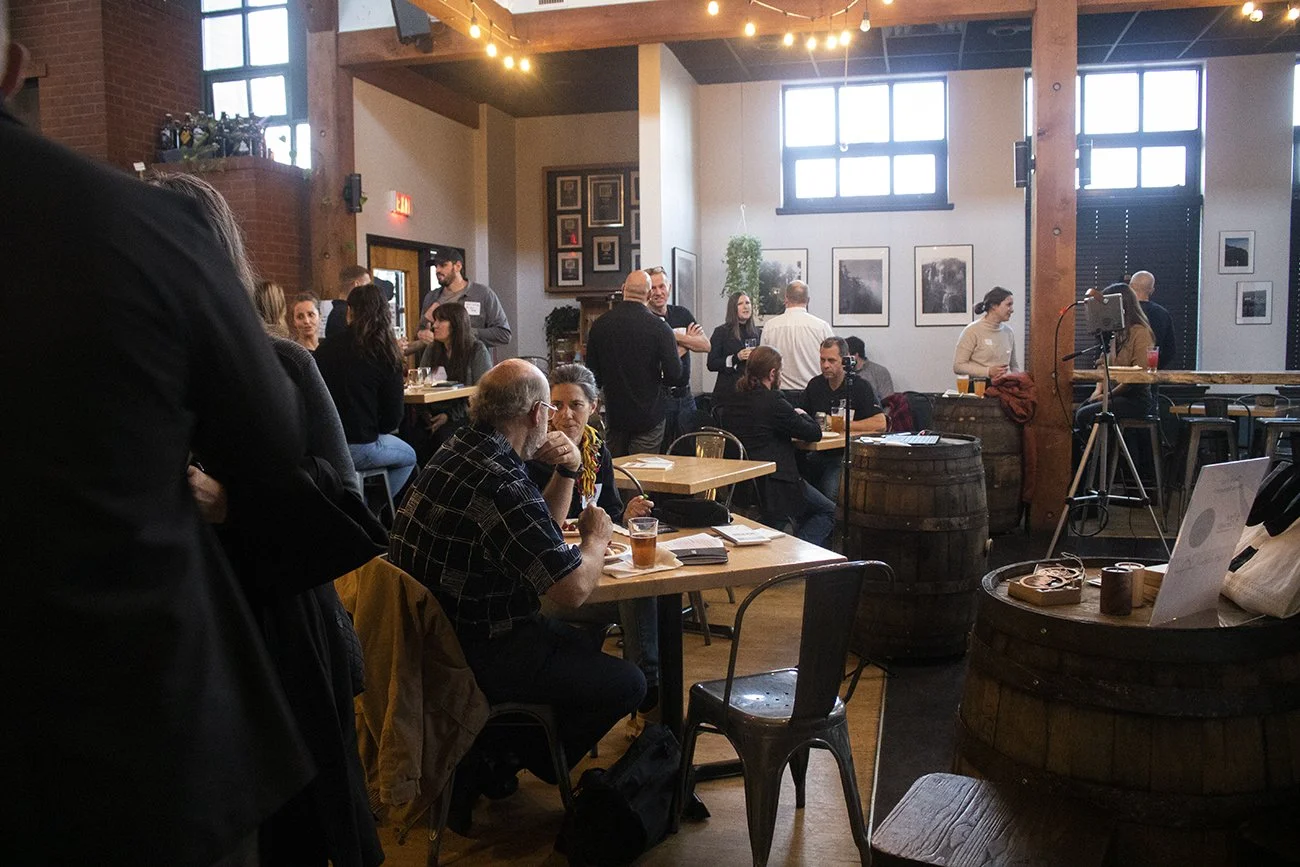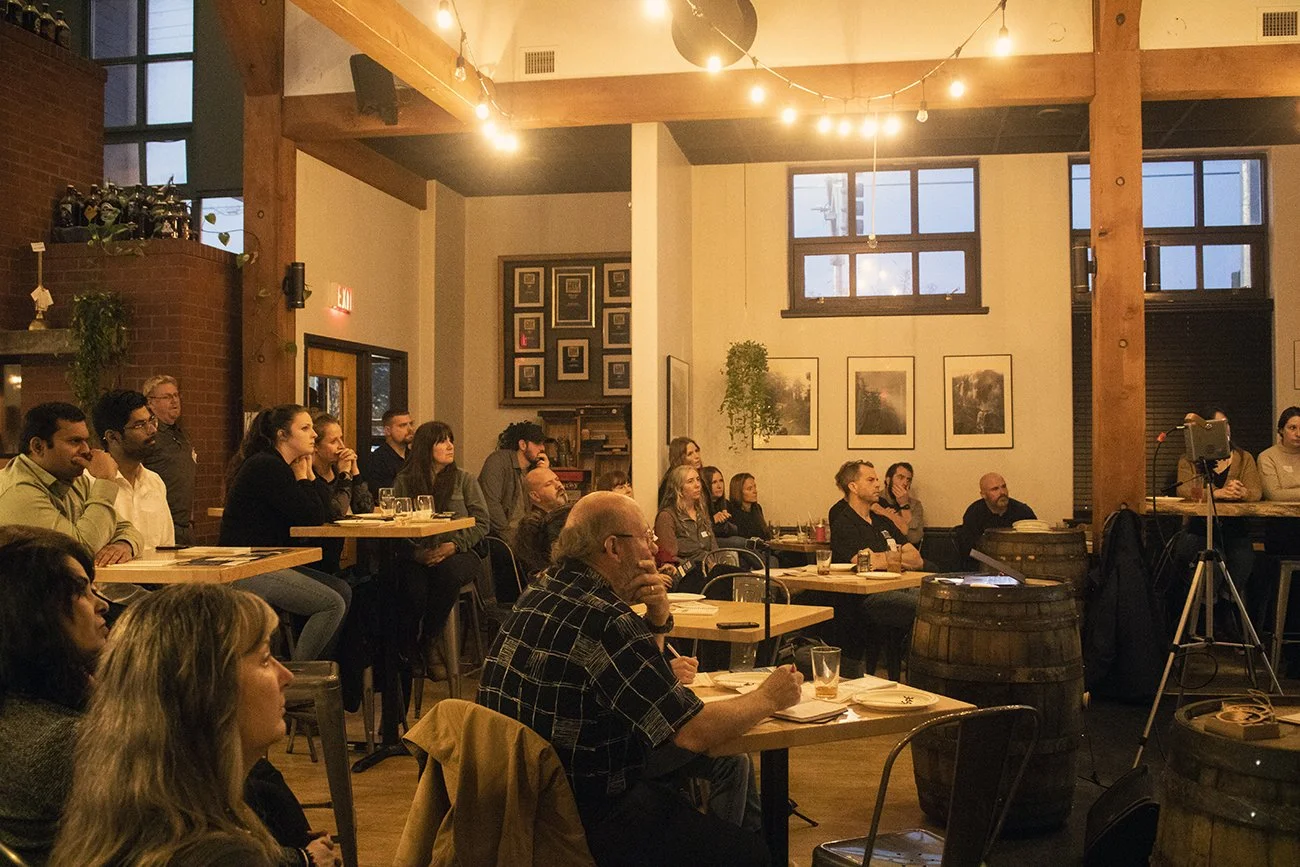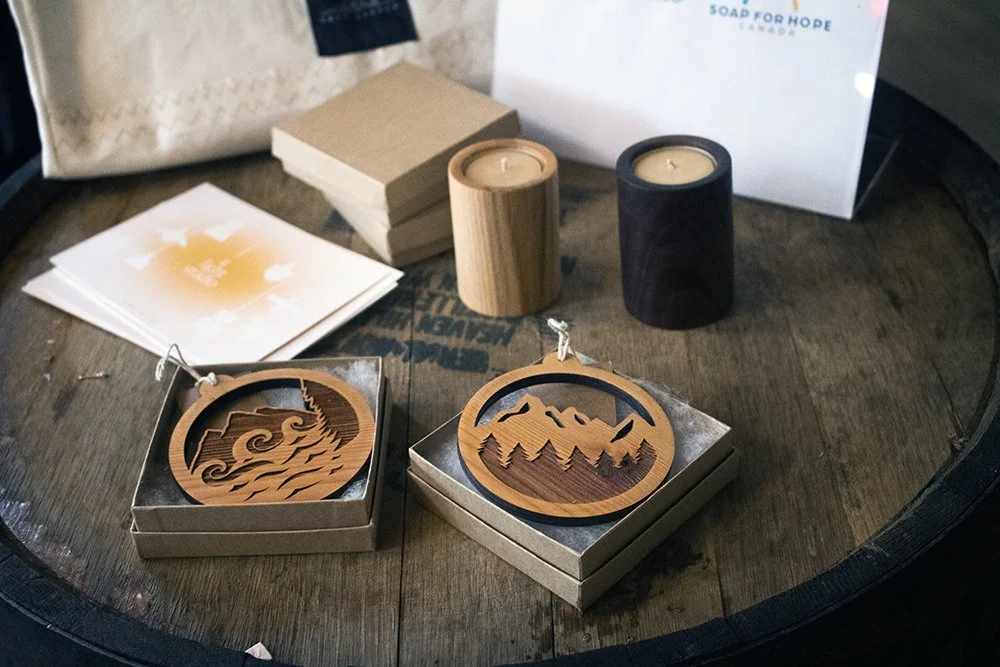The ‘Tinder of Construction' hopes to lower construction materials ending up in landfills
Three participants pitched unique ideas of how they repurpose surplus or salvaged materials in their work. Photo: Lauryn Mackenzie / CHLY 101.7fm
A new initiative is helping construction and manufacturing companies share leftover materials, lowering their costs and keeping more waste out of landfills.
Light House is a non-profit organization that looks to find methods in the building, construction, and manufacturing sectors to reuse building materials to eliminate waste and lower the cost of materials.
CHLY met with the managing director of circular innovation for Light House, Gil Yaron while he was setting up for a Light House event at White Sails Brewing on November 5.
“We've got about 3 million tons of building materials that are going into landfill every year, and we have about 30,000 homes across Canada that are being demolished every year to make way for densification,” Yaron said. “And at the same time, we have a housing crisis. So it's kind of ironic that at the same time that we're trying to create housing to meet the needs of our population, we're also destroying valuable homes.”
A new program Light House launched in August of this year is its Building Material Exchange (BMEx). BMEx connects construction and manufacturing businesses in the south and central areas of Vancouver Island to create a circular environment to share materials. The program serves as a way to contact companies with surplus materials to those who can still use them, keeping the materials from ending up in landfills.
Since its start, over 700 businesses have already engaged with the Building Material Exchange. Photo: Lauryn Mackenzie / CHLY 101.7fm
“It is basically Tinder for the construction sector. We act as a matchmaker. We find companies that have waste materials so they could be contractors on a building site or manufacturers of building materials for the waste that they're generating,” he said. “We find companies that want those materials and can use them in their manufacturing processes, whether it's to build new homes or to build other projects like greenhouses and planter boxes, landscaping–all kinds of things basically– and create that connection so that those materials get preserved and don't end up in landfill.”
Since its start, over 700 businesses have already engaged with the Building Material Exchange. Yaron said they have already gotten support from three Regional Districts on the island including the Regional District of Nanaimo.
“We have municipalities across the country that are looking at this program very closely as we roll it out,” he said.
Along with BMEx, Light House has launched the BMEx Challenge. Much like the popular show Dragon’s Den, the challenge gives people the opportunity to meet others in their sector, pitch ideas and find ways to reimagine how materials can be sourced, reused, and repurposed.
Tuesday, November 5th was the first inaugural BMEx Challenge at the brewery. Photo: Lauryn Mackenzie / CHLY 101.7fm
Tuesday, November 5th was the first inaugural BMEx Challenge at the brewery. With the lights set low around 50 people shared drinks and thoughts while eagerly waiting to hear the pitches for the night. Audience members came from different areas of the building sector: contracting, design, manufacturing, waste management, finance, government, academia, and deconstruction.
Three participants pitched unique ideas of how they repurpose surplus or salvaged materials in their work.
Jeff Krafta Executive Director for Habitat for Humanity Mid-Vancouver Island shared the idea of a joint project with Light House to establish a physical hub for reusable building materials in Nanaimo.
Jamie Angus of Deconstructors Demolition and Natty Structures pitched his company which uses sustainable materials to build modular homes that can address housing affordability and promote sustainability.
Gared Robinson of First Growth Reclaimed Design spoke about his work creating custom furniture and artwork from reclaimed Douglas fir.
Three participants pitched unique ideas of how they repurpose surplus or salvaged materials in their work. Photo: Lauryn Mackenzie / CHLY 101.7fm
Robinson spoke with CHLY about the artistic side of using reclaimed wood for his art.
About 11 years ago Robinson started First Growth Reclaimed Design in Vancouver wanting to repurpose reclaimed materials. It was during this time that he discovered that old homes being torn down in his neighbourhood still had perfectly good wood he could use.
“It's using old growth, reclaimed Douglas fir for everything that I do, which has been furniture, home decor, small gift items, cutting boards through the years,” Robinson said.
At first, he said he would go to sites where homes were being renovated and the old wood was left to the side.
“And then I would start going to deconstruction sites and talking to the companies that were running the sites, and they would allow me to salvage some material,” he said. “Then it turned into just purchasing material from deconstruction companies that once again remove it from deconstruction jobs, whether that's houses or commercial buildings.”
Robinson said other artists or builders might also be interested in learning about repurposed materials.
Robinson started First Growth Reclaimed Design in Vancouver wanting to repurpose reclaimed materials. Photo: Lauryn Mackenzie / CHLY 101.7fm
“Especially like this tight grain lumber, once you smell it, look at it and feel it, it's something very special,” Robinson said. “So I think there's probably a lot of very creative people that would enjoy working with it, and I think there's a lot of value in getting that material into their hands.”
As he has got into the deconstruction industry himself, Robinson said he has used BMEx regularly since its start as a way to sell his own surplus of recovered wood.
He said he is pitching at the BMEx Challenge in hopes of connecting with like-minded builders, architects, or designers who have a creative vision of consistently using repurposed materials on a bigger scale.
“It's a very small percentage that actually gets brought back into the circular economy and reused as something purposeful and useful,” Robinson said. “So I'd like to meet up with some people who are in the development industry, building, designing, like I said, that can help further the use of this raw material and add value.”
Yaron told CHLY he hopes if the BMEx model proves successful on Vancouver Island, they hope it will serve as a model for the rest of Canada.
Funding Note: This story was produced with funding support from the Local Journalism Initiative, administered by the Community Radio Fund of Canada.





